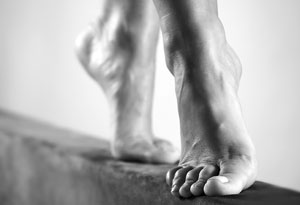Improve Your Balance in Less Than 5 Minutes

Photo: Thinkstock
How—and why—to take the wobble out of your walk, plus simple moves to help you stay on your feet.
In 1986 Sharon Wood became the first North American woman to reach the summit of Mount Everest. Today, at 53, she continues to scale heights, leading groups of women over 40 on their first-ever hikes. The initial lesson she gives: finding balance."I point out how they can maintain their center of gravity," says Wood. For example, "People tend to lean into the hill to keep closer to terra firma, but you should actually push away so your body is over your feet," she says. Wood knows firsthand that growing older can make it tough to stay poised—even when you're not 29,000 feet above sea level.
"As you age, common disorders such as vision loss, arthritis, and a diminished number of nerve endings in the feet can negatively affect your balance," says Neil Cherian, MD, a neurologist at the Cleveland Clinic. As a result, you're more likely to trip and fall, and that's dangerous, especially as your bones become more brittle after menopause.
Luckily, Cherian notes, nearly everyone can become more agile. "Cardiovascular workouts like hiking and climbing can help maintain and even improve your equilibrium," he says. Activities that challenge your center of gravity (like dancing), that involve balancing on one leg (like tai chi or yoga), or that require bending and straightening (like gardening) can also keep you steady on your feet, says Scott McCredie, author of Balance: In Search of the Lost Sense. McCredie also advises turning everyday activities into mini balance workouts. "It can be as simple as putting your socks on while standing up," he says. "When it comes to balance, I've learned it's either use it or lose it."
3 exercises you can do in under 5 minutes



